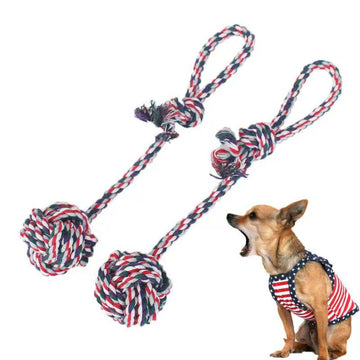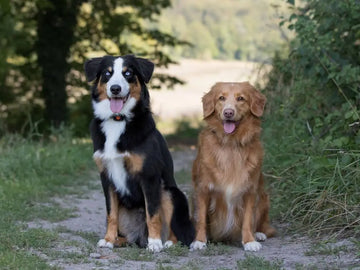Dogs are known for their joyful and playful personalities, and one of the main things that bring them happiness is toys. Whether it’s a squeaky ball, a chew bone, or a plush stuffed animal, dogs seem to have an endless love for toys. But what is it that makes them so irresistible to our furry friends? The answer lies in a mix of instinctual behaviors, mental stimulation, social bonding, and physical exercise. Let’s explore why dogs love toys and how they contribute to their overall well-being.
Instincts and Playful Nature
At the core of every dog’s love for toys is their natural instinct to play. Just like their wild ancestors, dogs are hardwired to engage in activities that simulate hunting, exploring, and problem-solving. Toys mimic objects that a dog might encounter in the wild. For instance, balls represent prey that they might chase and capture, while bones are akin to those they would chew on to keep their teeth clean and sharp.

Play is vital for dogs, especially puppies. For puppies, play is how they learn about the world around them. They develop motor skills, social behavior, and cognitive abilities through play. Even as dogs grow older, they retain the need for play, as it provides not only physical exercise but also essential mental stimulation. Dog toys are an outlet for all that energy and curiosity, making them crucial for a dog’s overall happiness.
Chewing: A Natural Instinct
Chewing is one of the most inherent behaviors in dogs. For puppies, chewing helps relieve the discomfort caused by teething. For adult dogs, chewing serves to keep their teeth clean, massage their gums, and strengthen their jaw muscles. In the wild, dogs would chew on bones and other objects to keep their teeth in good shape, and the same instinct drives domestic dogs to chew.
This is why dog toys designed for chewing are so popular. Rubber toys, bones, or ropes are perfect for dogs that need to gnaw on something. Not only does chewing give dogs a satisfying outlet for this natural behavior, but it also prevents them from turning to household items like shoes or furniture. The act of chewing releases endorphins in a dog’s brain, promoting feelings of happiness and calm.
Interactive Play and Bonding with Humans
Dogs are social animals, and they thrive on interaction with their human companions. Toys serve as a great tool for strengthening the bond between you and your dog. Interactive play, such as fetch or tug-of-war, allows dogs to engage with you, and it also reinforces the human-animal bond.
Interactive toys for puppies are especially helpful in building this connection. Puppies, in particular, are highly impressionable, and their interactions with toys can shape how they respond to people and other dogs later in life. A fun, rewarding play session can build trust, create positive associations, and offer an outlet for a puppy’s excess energy.

The act of retrieving a ball or tugging on a rope gives dogs a sense of achievement and encourages them to keep playing. It also creates positive reinforcement: when your dog successfully fetches a ball or wins a tug-of-war game, they are rewarded with attention, praise, or even a treat. This interaction is essential for building trust and ensuring your dog feels emotionally fulfilled.
Mental Stimulation Through Toys
Dogs are not just physical beings; they are intelligent creatures that require mental stimulation. This is where certain toys come in, especially interactive toys for puppies and adult dogs alike. Puzzle toys, treat-dispensing toys, and other brain-teasers challenge a dog’s mind and mimic the problem-solving they would face in the wild, such as hunting for food or figuring out how to access a hidden treat.
Mental exercise is just as important as physical exercise. Without proper mental stimulation, dogs can become bored, anxious, or develop undesirable behaviors, such as destructive chewing or excessive barking. Interactive toys that require problem-solving can prevent these issues by keeping dogs engaged and mentally active.
When searching for the best interactive toys for dogs, it’s important to choose options that provide both entertainment and a challenge. Toys that hide treats or require a series of steps to unlock are excellent for keeping your dog’s mind sharp. These toys not only help fight boredom but also provide a fun, rewarding experience as your dog works out how to solve them.
Stress Relief and Comfort
Dogs can sometimes experience stress, whether due to separation anxiety, changes in their environment, or unfamiliar situations. In such times, toys can provide much-needed comfort and relief. Many dogs find comfort in plush toys or blankets that they can cuddle with, much like humans use comfort objects to feel secure.
Chew toys also play a role in calming anxious dogs. When dogs chew on a toy, it helps them release pent-up tension and feel more at ease. The repetitive action of chewing can be soothing, and it provides a distraction from stress-inducing situations. For dogs that suffer from separation anxiety, leaving them with a favorite toy can help them feel less lonely and more secure when left alone.
Physical Exercise Through Play
In addition to being fun, toys are essential for physical exercise. Dogs, particularly high-energy breeds, need plenty of physical activity to stay healthy and happy. Toys like balls, frisbees, and tug ropes are perfect for engaging dogs in activities that require running, jumping, and active participation.
Physical exercise through toys helps keep dogs fit, which is important for their overall health. Regular play can help prevent obesity, increase stamina, and improve coordination. Fetch is a great example of how toys can help dogs burn off excess energy while having fun. Not only does it allow dogs to run around, but it also promotes bonding between the dog and their owner.
Variety Keeps Things Interesting
Dogs, like humans, can get bored with routine. Offering a variety of toys ensures that your dog stays mentally engaged and entertained. Changing up the types of toys you offer can stimulate your dog’s curiosity and prevent them from losing interest in playtime.
Toys with different sounds, textures, and shapes are particularly effective at keeping dogs interested. Some dogs love squeaky toys because they mimic the sounds of prey animals, while others prefer toys that make crinkling or rustling noises. Variety in toys can also keep your dog’s senses sharp and encourage them to explore and interact in different ways.
Conclusion
So why do dogs love toys? It’s because toys fulfill so many important needs in their lives. They cater to their instincts, provide physical and mental exercise, strengthen their bond with humans, and help them cope with stress and anxiety. Whether it’s a chew toy to gnaw on, a puzzle to solve, or an interactive toy to engage with, toys play a crucial role in keeping dogs happy, healthy, and mentally stimulated.
Ultimately, it’s easy to see why dogs love toys. From satisfying their natural instincts to providing essential mental and physical stimulation, toys are indispensable for a dog’s well-being. Whether it's a chew toy, a puzzle, or an interactive game, toys offer much more than just entertainment—they help dogs lead healthier, happier lives. If you're thinking about adding something new to your dog's toy collection, remember to look for high-quality dog toys that will engage both their body and mind. And if you have a puppy, don't miss out on some interactive toys for puppies to support their early development. After all, nothing beats the joy of seeing your dog’s excitement as they interact with their favorite toy!








